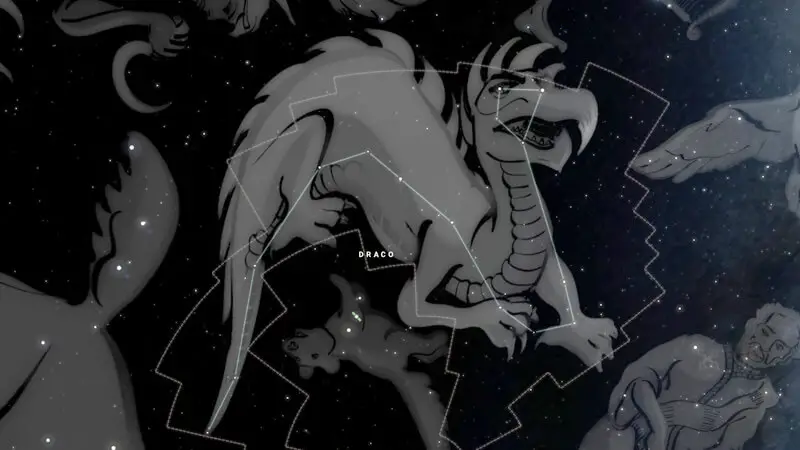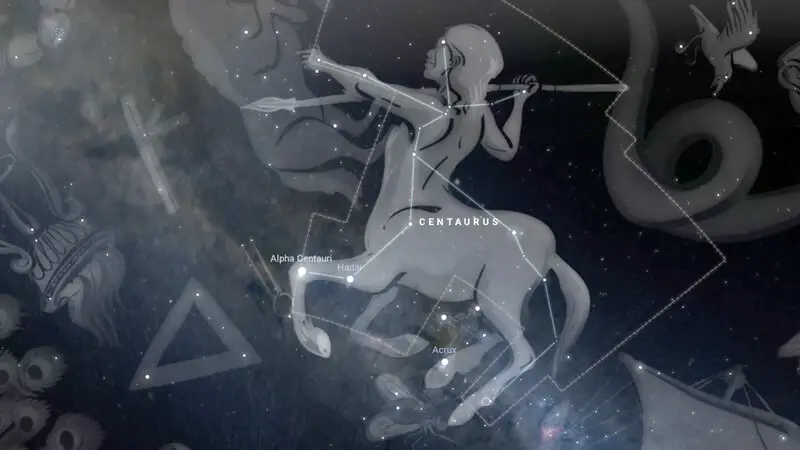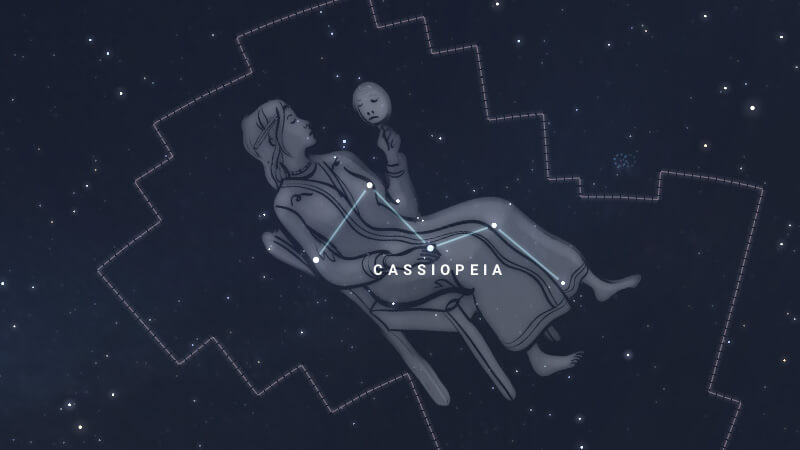Have you ever wondered if you can see the same constellations in different countries? Well, the answer is both yes and no.
While you can see some constellations worldwide, some are unique to specific regions. For example, the Big Dipper is a well-known asterism you can see in most parts of the world. It is part of the constellation Ursa Major, visible throughout the year in the Northern Hemisphere. However, the Southern Cross is a constellation you can only see from the Southern Hemisphere. It is a distinctive and easily recognizable constellation that has been used for navigation by sailors for centuries.
In a nutshell
Whether you are an amateur astronomer or just someone who enjoys gazing up at the stars, knowing which constellations you can see from your location can enhance your stargazing experience. While some constellations are visible from all parts of the world, others are unique to certain regions. I will delve deeper into the constellations in different areas and provide tips on identifying them.
In this article, you get
a close look at various constellations in each hemisphere
factors affecting the visibility of constellations
seasonal variances and circumpolar constellations
a quick look at the effects of light pollution
answers to frequently asked questions about constellations
By the end of this article, you’ll have all the info you need to see constellations in different countries and much more.
Let’s dive right in.
Can You See the Same Constellations in Different Countries: Introduction

Have you ever wondered if you can see the same constellations in different countries? The answer depends on a few factors. This section will explore the factors affecting your ability to see the same constellations in different countries.
Factors Influencing Visibility
The position of the stars in the sky depends on the latitude and longitude of the observer. However, the position of the stars change throughout the night due to the Earth’s rotation. This means you can see the same constellations from different countries, but at different times of the night.
The observer’s latitude also plays a role in determining which constellations are visible. For example, the constellations in the southern hemisphere are not visible from the northern hemisphere, and vice versa. This is because the Earth’s axis is tilted, causing different parts of the sky to be visible from different latitudes.
Atmospheric conditions can also affect visibility. Clouds, haze, and air pollution can obstruct the view of the stars. Similarly, light pollution from cities can make it challenging to see fainter stars and constellations.
The time of year also affects which constellations are visible. Some constellations are only visible during certain seasons, while others can be seen year-round. For example, the constellation Orion is visible in the winter months in the northern hemisphere but in the summer months in the southern hemisphere.
To summarize, the following factors can influence your ability to see the same constellations in different countries:
- the position of the stars in the sky depends on your latitude and longitude
- the time of the night
- the atmospheric conditions
- the time of year
Tips for Improving Visibility
If you want to improve your chances of seeing the same constellations in different countries, here are a few tips:
- Choose a location with low light pollution, such as a rural area or a national park.
- Check the weather forecast and choose a clear night to stargaze.
- Use a telescope or binoculars to see fainter stars and constellations.
By following these tips, you can increase your chances of seeing the same constellations in different countries.
FREE STARGAZING CHECKLIST
My 5-page Stargazing Checklist will enhance your astronomical observations.
Follow this free checklist to navigate the night sky with confidence, clarity, and a sense of preparedness for a rewarding stargazing experience.

Constellations Across Cultures

While many constellations are visible worldwide, different cultures interpret the same star patterns differently.
For example, Greek mythology has heavily influenced the Western interpretation of constellations. The well-known constellations like Orion, Ursa Major, and Cassiopeia have their roots in Greek mythology. However, Chinese astronomy has its own constellations vastly different from the Western ones.
In Chinese astronomy, the constellations are organized into 28 mansions, each associated with a particular season, direction, and element. For instance, the Black Tortoise of the North is a constellation representing the north and winter. It is also associated with the element of water.
Aboriginal astronomy is another example of how different cultures have their own interpretations of the same star patterns. The Aboriginal people of Australia have been observing the stars for tens of thousands of years. They have their own constellations that tell stories of the Dreamtime, which is the Aboriginal creation myth.
Here are some examples of Aboriginal constellations:
- The Emu in the Sky, which is made up of dark clouds that resemble the shape of an emu
- The Seven Sisters, which are a group of stars that represent seven sisters who are being chased by a man represented by the star Antares
- The Westerners, which are a group of stars that represent a group of men who are traveling to a ceremony
It’s fascinating to see how different cultures have their own interpretations of the same star patterns. Whether gazing up at the night sky in Greece, China, or Australia, you’ll surely see some familiar constellations with different stories and meanings attached to them.
Next, let’s look at some of the most well-known constellations and their stories.
Constellations in the Northern Hemisphere

If you’re in the Northern Hemisphere, you have a different view of the sky than those in the Southern Hemisphere.
Famous Northern Constellations
Some of the most famous constellations visible in the Northern Hemisphere include Ursa Major, Cassiopeia, and Orion.
Ursa Major is one of the most recognizable constellations. It includes a group of seven stars that form a shape resembling a ladle (the Big Dipper). It’s visible year-round in the Northern Hemisphere and can help you find other constellations. If you follow the two stars at the end of the Big Dipper’s ladle, they point toward the North Star, part of the Little Dipper constellation.
Cassiopeia is another easily recognizable constellation resembling a “W” or “M” in the sky.
Orion is a constellation visible in the winter months and is known for its three bright stars forming Orion’s Belt.
Draco is another constellation that is visible in the Northern Hemisphere. It’s a long, winding constellation that looks like a dragon. It’s less well-known than other constellations but still visible in the night sky.
The position of stars in the sky changes throughout the night due to Earth’s rotation. This means that the constellations visible at one time of the night might not be visible later on. The position of stars also changes depending on your latitude. For example, Ursa Major is always visible in the Northern Hemisphere, but its situation in the sky varies depending on your location.
If you’re in the Northern Hemisphere, you can see all of the constellations in the northern part of the sky and some of what is visible from the Southern Hemisphere. However, you won’t be able to see constellations only visible in the Southern Hemisphere, like the Southern Cross.
Now that we’ve covered some famous constellations in the Northern Hemisphere, let’s move on to those in the Southern Hemisphere.
Constellations in the Southern Hemisphere

If you’re traveling to the Southern Hemisphere, you might wonder if you’ll be able to see the same constellations as you do in the Northern Hemisphere. The answer is no, you won’t see the same constellations, but you will see some familiar ones and some new ones too.
Famous Southern Constellations
One of the most famous constellations in the Southern Hemisphere is the Southern Cross. It’s a small but distinctive constellation visible from most of the Southern Hemisphere. The Southern Cross is part of the larger constellation of Crux, which also includes a few other stars.
Another famous constellation in the Southern Hemisphere is Centaurus. This constellation contains Alpha Centauri, the closest star system to Earth. Centaurus is also home to several other bright stars, including Beta Centauri and Hadar.
Scorpius is another well-known constellation in the Southern Hemisphere. It’s a large constellation with several bright stars, including Antares, a red supergiant star. Scorpius is also home to several star clusters and nebulae.
Star Positions and Earth’s Rotation
The position of the stars in the Southern Hemisphere is different from the Northern Hemisphere because of the Earth’s rotation.
As the Earth rotates, the position of the stars appears to change in the sky. This means that the stars you see in the Southern Hemisphere depend on your latitude and the time of year.
If you’re at the equator, you’ll be able to see the entire sky over the course of a year. If you’re at a higher latitude, you’ll see fewer stars because some will be below the horizon.
The stars also appear to move in circles around the South Celestial Pole, the point in the sky directly above the Earth’s South Pole.
The Magellanic Clouds

The Magellanic Clouds are two small galaxies visible from the Southern Hemisphere.
They are named after the explorer Ferdinand Magellan, who first observed them during his voyage around the world. The Magellanic Clouds are located close to the Southern Cross and are a popular target for astronomers.
Carina Nebula

The Carina Nebula is a large, bright nebula located in the constellation Carina.
It’s one of the largest and brightest nebulae in the Southern Hemisphere and home to several star clusters and other objects. The Carina Nebula is a popular target for astrophotographers, visible from most of the Southern Hemisphere.
As we’ve seen, many fascinating constellations and objects exist in the Southern Hemisphere.
Circumpolar Constellations

If you live in a country close to the North or South Pole, you can see the same constellations all year round. These constellations are called circumpolar constellations.
The most famous circumpolar constellation in the Northern Hemisphere is Ursa Major, often called the Big Dipper. It is easy to recognize and can be seen all year round.
Another well-known circumpolar constellation is Cassiopeia. This constellation is named after a Greek queen known for her beauty.
Draco is another circumpolar constellation that can be seen in the northern hemisphere all year round. It is a long, winding constellation that looks like a dragon.
These three constellations are easy to spot and help you navigate the night sky. Here are some tips for finding these circumpolar constellations:
- Look for Ursa Major by finding the Big Dipper. The two stars at the end of the cup of the Big Dipper point towards Polaris.
- Cassiopeia is opposite the Big Dipper and shaped like a W or M.
- Draco is a winding constellation that looks like a dragon.
Next, we will look at some seasonal constellations you can see at different times of the year.
Seasonal Variations

You may see different constellations in the night sky depending on the time of year and location.
Some constellations, like the Summer Triangle and the Winter Hexagon, are visible from many parts of the world during certain seasons. Other constellations, like the Spring Stars, are only visible from specific locations during certain times of the year.
If you live in the Northern Hemisphere, you can see the Summer Triangle during the summer months. This constellation comprises three bright stars: Vega, Altair, and Deneb. In the Southern Hemisphere, you can see the Summer Triangle during winter.
The Winter Hexagon is another constellation that is visible during certain seasons. This constellation comprises six bright stars: Sirius, Procyon, Pollux, Capella, Aldebaran, and Rigel. You can see the Winter Hexagon in the Southern Hemisphere during summer. In the Northern Hemisphere, you can see the Winter Hexagon during winter.
During the spring months, you may be able to see the Spring Stars. These constellations are visible from many parts of the world during spring. Some famous Spring Stars include Leo, Virgo, and Bootes.
It’s important to remember that the time of year and location can impact which constellations you can see. If you’re interested in stargazing, it’s a good idea to research which constellations are visible in your area during different times of the year.
You can also use a star chart or a mobile app to help you identify constellations in the night sky.
- Research which constellations are visible in your area during different times of the year
- Use a star chart or a mobile app to help you identify constellations in the night sky
Next, I’ll discuss how light pollution can impact your ability to see constellations in the night sky.
The Impact of Urban Light Pollution

Urban light pollution can significantly impact your ability to see the stars and constellations.
The bright lights from buildings, streetlights, and vehicles can make it difficult to see even the brightest stars in the night sky. This can be incredibly frustrating if you are trying to view constellations in different countries.
One way to combat urban light pollution is to visit a dark sky park. These parks are in remote areas away from the light pollution of cities and towns. They are designed to provide optimal conditions for stargazing and typically have restrictions on artificial lighting in the area.
Here are my recommended dark sky locations to see constellations in the northern hemisphere:
- Arizona stargazing spots, especially Sedona AZ
- Best places to see constellations in California, especially Joshua Tree and Death Valley
- Colorado stargazing locations
- Florida is great for seeing constellations
- Utah has some of the darkest skies in the USA, especially Moab UT
- Texas skies are best seen in Big Bend National Park
- Stargaze the Hawaiian islands of Kauai, Oahu and Maui
If you are unable to visit a dark sky park, using filters and lenses can help improve your visibility of stars and constellations. These filters and lenses block out light pollution and enhance the visibility of celestial objects.
- A light pollution filter can be attached to the end of your telescope or camera lens to reduce the light pollution that enters the lens.
- Astronomical filters can also enhance the visibility of specific wavelengths of light, making it easier to see certain stars and constellations.
When selecting a telescope for viewing constellations, it is essential to consider the level of light pollution in your area. A telescope with a larger aperture will allow more light to enter, making it easier to see fainter stars and constellations.
Light pollution can make seeing the same constellations in different countries difficult.
However, by visiting a dark sky park, using filters and lenses, and selecting the right telescope, you can improve your chances of seeing the stars and constellations you are looking for.
Frequently Asked Questions
Does everyone in the Northern Hemisphere see the same stars?
No, not everyone in the Northern Hemisphere sees the same stars. The stars we see in the night sky depend on our location and time of year on Earth. For example, people in the United States see different stars than those in Australia. The stars we see are also affected by humidity, light pollution, and the time of night.
Where do you have to be on Earth to see all the constellations?
To see all the constellations, you need to be at the equator, an imaginary line around the center of the Earth. You can see all the stars from the equator at some point during the year. This is because the Earth rotates on its axis, and you can see both the northern and southern hemispheres from the equator. However, even at the equator, some constellations are only visible during certain times of the year.
Can you see the same stars from everywhere on earth?
No, you cannot see the same stars from everywhere on Earth. The visibility of stars in the night sky varies depending on your location on Earth’s surface and the time of the year. Earth’s rotation causes the night sky to appear to move, and as a result, different stars become visible at different times and from different latitudes. Stars that are visible in the northern hemisphere may not be visible from the southern hemisphere, and vice versa.
Summary: different constellations
Thank you for reading my article “Can You See the Same Constellations in Different Countries?”
If you love stargazing, you may wonder if you can see the same constellations in different countries. The answer depends!
The stars and constellations you can see depend on your location and the time of year. But, regardless of where you are in the world, you can always see some of the same constellations.
For example, the Big Dipper is visible in both the Northern Hemisphere and the Southern Hemisphere but only from some locations in the Southern Hemisphere. The Southern Cross is visible in the Southern Hemisphere but not in the Northern Hemisphere.
If you travel to a different country, you may see new constellations not visible from your home country. For example, in the Southern Hemisphere, you can see the Magellanic Clouds, which are not visible from the Northern Hemisphere.
- To see the constellations in a different country, find out what time of year is best for stargazing and what constellations are visible in that location.
- Look for local astronomy clubs or planetariums that can help you identify the constellations.
- Bring a star chart or download a stargazing app to help you identify the constellations.
Stargazing can be fun and educational at home or traveling to a different country. Take the time to look up at the night sky and appreciate the beauty of the stars and constellations above.
Remember, no matter where you are, you can always discover something new and exciting in the night sky!




